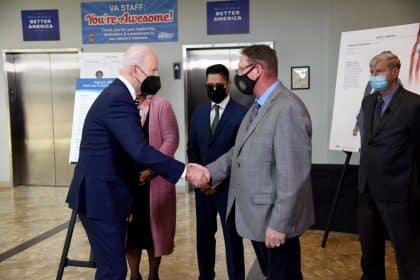Veterans Exposed to Burn Pits Gain Support in Congress

WASHINGTON — A congressional panel sought assurances Wednesday that veterans’ claims of illnesses from exposure to toxins in the Middle East will be addressed promptly.
A House Veterans Affairs subcommittee was responding to a National Academy of Sciences report this month describing alarming health problems for veterans exposed to “burn pits.”
“We’re facing another Agent Orange,” said Rep. Gil Cisneros, D-Calif., in reference to a toxic chemical used for deforestation in Vietnam. Many soldiers exposed to Agent Orange later became sick or died from cancer.
Burn pits are areas on military bases devoted to open-air burning of waste. They were used extensively on U.S. military sites in Iraq and Afghanistan, beginning in 2001.
The wastes included chemicals, paints, medical waste, metal and aluminum products and munitions. U.S. military personnel assumed burning the wastes would not create long-term health problems for persons exposed to them.
In recent years, thousands of veterans reported respiratory illnesses and cancers apparently tied to burn pits.
Many of their complaints were verified by a National Academy of Sciences report published on Sept. 11.
Lawmakers during the Subcommittee on Disability Assistance and Memorial Affairs hearing said they wanted to avoid the kinds of delays that led to many veterans dying or becoming impoverished by illness before getting help after Agent Orange exposures.
“Time is of the essence,” Cisneros said.
He was speaking to representatives from the Veterans Administration who told the congressmen they wanted to act quickly but avoid mistakes by hurrying too much.
About 12,500 veterans have filed claims with the Veterans Administration for benefits they say they need after being exposed to burn pits. The Veterans Administration has granted more than 2,800 of the claims while still considering others.
The problem with other claims is proving the illnesses are related to burn pits or similar toxic exposures during military service in the Middle East.
“Frankly the scientific evidence was not up to par,” said Sverre Vedal, a University of Washington environmental and public health specialist.
The Veterans Administration has standards of evidence for disability claims but for burn pits, “often the exposure assessment is pretty crude,” Vedal said.
One possibility being considered is using archived NASA satellite data from areas around the military’s burn pits to analyze how much particulate matter is likely to have been inhaled by persons nearby, he said.
A bill recently introduced in Congress by Rep. Raul Ruiz, D-Calif., and Sen. Kirsten Gillibrand, D-N.Y., would make obtaining benefits easier for veterans exposed to burn pits. It creates a legal presumption of disability if they suffer symptoms and were deployed to the Middle East since 1990.
No date is set for a vote on the pending legislation.
Patricia Hastings, a Veterans Health Administration doctor who oversees patient care services, says the congressional bill is similar to the agency’s current practices. If there are “ambiguities” in a disability claim, the presumption for benefits goes to the veteran, she said.
She cautioned against being too aggressive in assuming burn pit toxins explain a veteran’s health problems.
Pre-existing respiratory problems, blast injuries and post traumatic stress disorder could explain some symptoms, she said. Overlooking them could result in a misdiagnosis and inappropriate treatment.
“We don’t want to say that everything is burn pits,” Hastings said.
Nevertheless, some members of the subcommittee appeared frustrated over the Veterans Administration’s slow pace in resolving disputes about the chemical exposures.
“The scientific evidence everywhere is clear,” said Rep. Mike Bost of Illinois, the ranking Republican on the subcommittee. “These [burn pits] cause health hazards. Why is it so difficult for us to get the VA to understand?”























